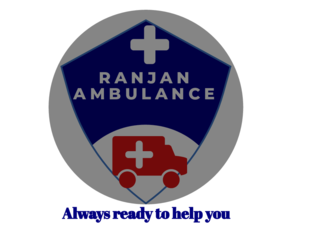
Ambulance Services in Buxar: Bridging Healthcare Gaps in Rural Bihar
Buxar, a district located in the southwestern part of Bihar, India, holds historical significance and is known for its cultural heritage. Despite its historical roots, Buxar faces challenges typical of rural India, especially concerning healthcare accessibility and emergency medical services. This article explores the importance, infrastructure, challenges, and impact of ambulance services in Buxar district.
Healthcare Landscape in Buxar
Buxar district, bordered by the districts of Bhojpur to the north, Ghazipur and Ballia districts of Uttar Pradesh to the west, and Rohtas to the east, predominantly consists of rural areas with scattered population centers. The healthcare infrastructure includes primary health centers (PHCs), community health centers (CHCs), and a district hospital, which serve the healthcare needs of its residents. However, accessing timely medical care, particularly during emergencies, remains a significant challenge due to infrastructural limitations and geographical constraints.
Importance of Ambulance Services
Ambulance services in Buxar district play a crucial role in healthcare delivery for several reasons:
Emergency Medical Response: Ambulance services provide critical emergency medical response, ensuring timely transportation of patients from the site of emergencies to healthcare facilities. This swift access to medical care significantly improves the chances of survival and recovery for patients with acute health conditions such as accidents, heart attacks, strokes, and childbirth complications.
Medical Transport Accessibility: Ambulances facilitate the transportation of patients requiring medical intervention to appropriate healthcare centers, ensuring they receive necessary treatment and specialized care promptly.
Healthcare Equity: Ambulance services promote equity in healthcare access by ensuring that residents, including those in remote and underserved areas, have access to emergency medical transport irrespective of their socioeconomic status. This helps in reducing disparities in healthcare outcomes across the district.
Types of Ambulance Services Available
In Buxar district, ambulance services are typically categorized based on their capabilities:
Basic Life Support (BLS) Ambulances: These ambulances are equipped with basic medical equipment such as oxygen, first aid supplies, and medications. They are staffed with trained paramedics who can stabilize patients and provide initial medical care during transportation to healthcare facilities.
Advanced Life Support (ALS) Ambulances: ALS ambulances are equipped with advanced medical equipment, including cardiac monitors, ventilators, and intensive care medications. They are staffed with paramedics or emergency medical technicians (EMTs) trained to manage critical medical conditions and emergencies effectively.
Infrastructure and Operation
The infrastructure supporting ambulance services in Buxar includes:
Ambulance Fleet: Managed by government health departments and occasionally supplemented by private healthcare providers, the ambulance fleet comprises vehicles adapted for rural and semi-urban environments. These vehicles are equipped to navigate varying terrains and ensure timely response to emergency calls.
Emergency Dispatch Centers: These centers serve as communication hubs, receiving emergency calls and dispatching ambulances based on the severity and nature of the medical emergency. Coordination with hospitals, PHCs, and CHCs facilitates seamless transfer of patients for further medical treatment upon arrival.
Training and Staffing: Ambulance services in Buxar are supported by skilled paramedics, EMTs, and drivers who undergo regular training to maintain proficiency in emergency medical care and safe transportation practices.
Challenges and Solutions
Despite their critical role, ambulance services in Buxar encounter several challenges:
Infrastructure Limitations: Poor road conditions, especially during monsoon season, can impede the timely arrival of ambulances in remote and inaccessible areas. Improving and maintaining road infrastructure is essential to ensure reliable and efficient ambulance services.
Awareness and Accessibility: Public awareness about when and how to access ambulance services during emergencies remains limited in some communities. Conducting awareness campaigns and leveraging technology for emergency response awareness can improve accessibility.
Funding and Sustainability: Ensuring sustainable funding for ambulance services and maintaining the fleet in good operational condition pose ongoing challenges. Public-private partnerships and innovative funding models are essential for addressing these issues and enhancing service quality.
To address these challenges, initiatives include:
Technology Integration: Incorporating GPS tracking systems and mobile applications for emergency dispatch and patient tracking to improve response times and coordination.
Community Engagement: Conducting health education programs and training sessions on emergency response and first aid techniques to empower communities and promote proactive healthcare-seeking behavior.
Public-Private Partnerships: Collaborating with private healthcare providers and NGOs to expand ambulance fleet capacity and improve service coverage in underserved areas of Buxar district.
Impact on Healthcare Outcomes
Efficient ambulance services in Buxar district contribute significantly to improved healthcare outcomes:
Reduced Mortality Rates: Timely access to medical care through ambulance services helps reduce mortality rates associated with critical conditions and accidents.
Enhanced Patient Care: Prompt transportation in ALS ambulances allows for early intervention and specialized medical treatment, improving outcomes for patients requiring intensive care.
Healthcare Access Equity: Ambulance services ensure equitable access to emergency medical transport, regardless of socioeconomic status or geographic location, thereby reducing disparities in healthcare access.
Future Directions
Looking ahead, enhancing ambulance services in Buxar involves:
Technology Advancements: Continued integration of advanced technologies such as telemedicine, real-time data analytics, and mobile health applications to enhance ambulance service efficiency and patient care.
Capacity Building: Continuous training and skill development for ambulance staff to ensure they are well-equipped to handle diverse medical emergencies and provide compassionate patient care.
Policy and Governance: Strengthening regulatory frameworks and governance mechanisms to ensure sustainable funding, efficient service delivery, and accountability in ambulance operations.
Conclusion
Ambulance services in Buxar district serve as critical links in the healthcare chain, ensuring timely emergency medical assistance and improving healthcare access and equity for residents, particularly in rural and underserved areas. As Buxar continues to develop, it is imperative to prioritize investments in healthcare infrastructure, including ambulance services, to meet the growing demand for emergency medical care. Through innovation, collaboration, and community engagement, Buxar can strengthen its ambulance services, enhance healthcare outcomes, and contribute to the overall well-being of its population.
